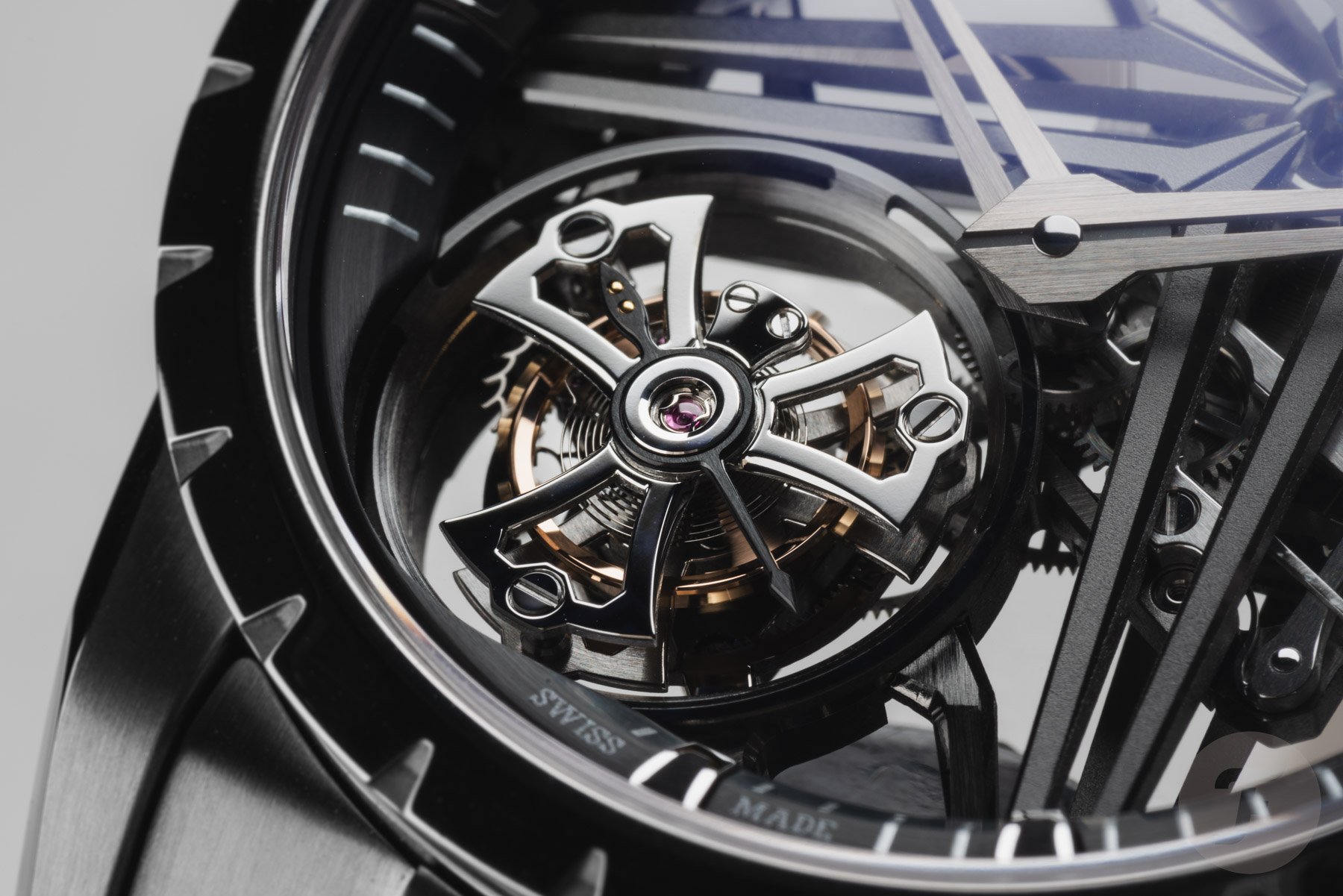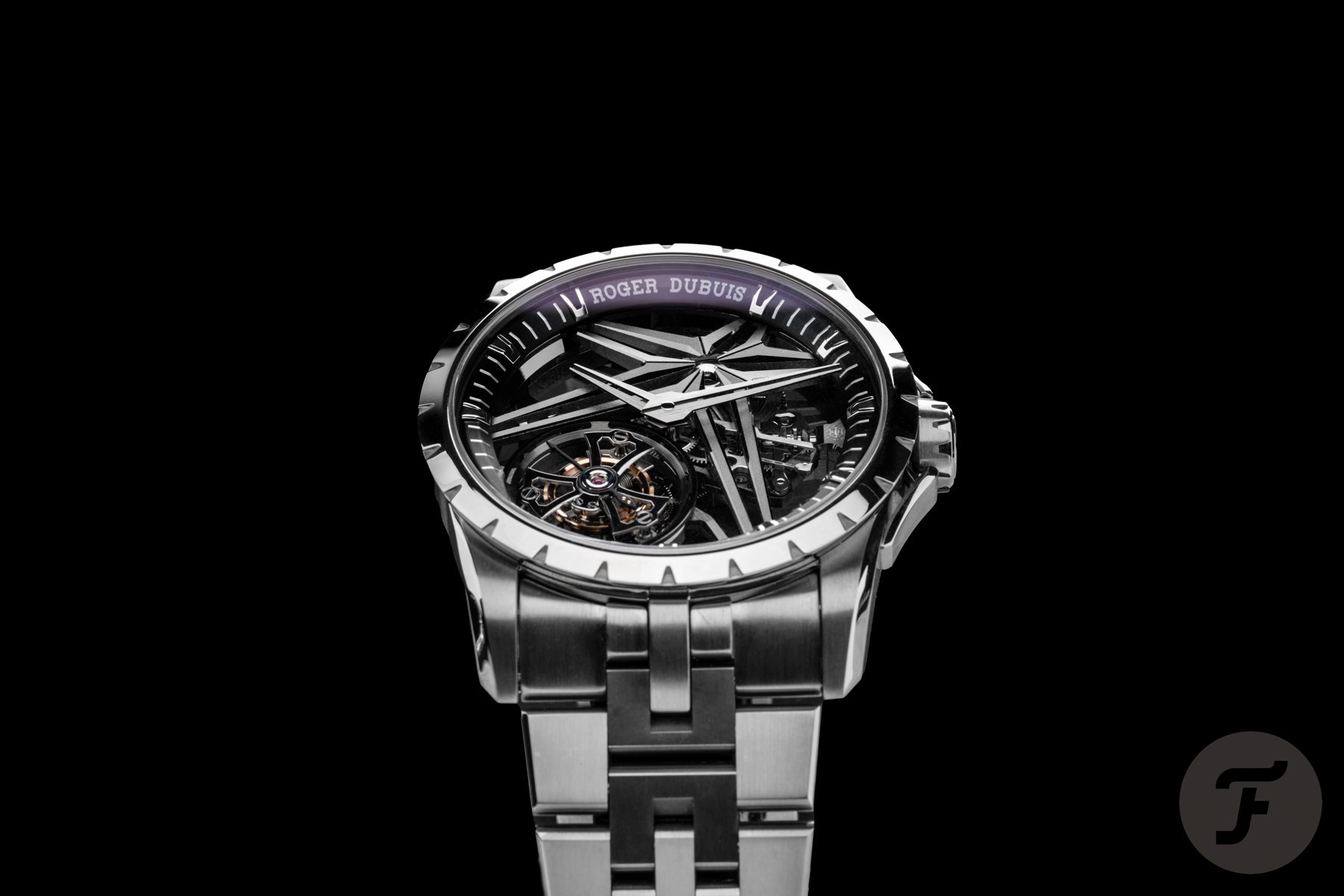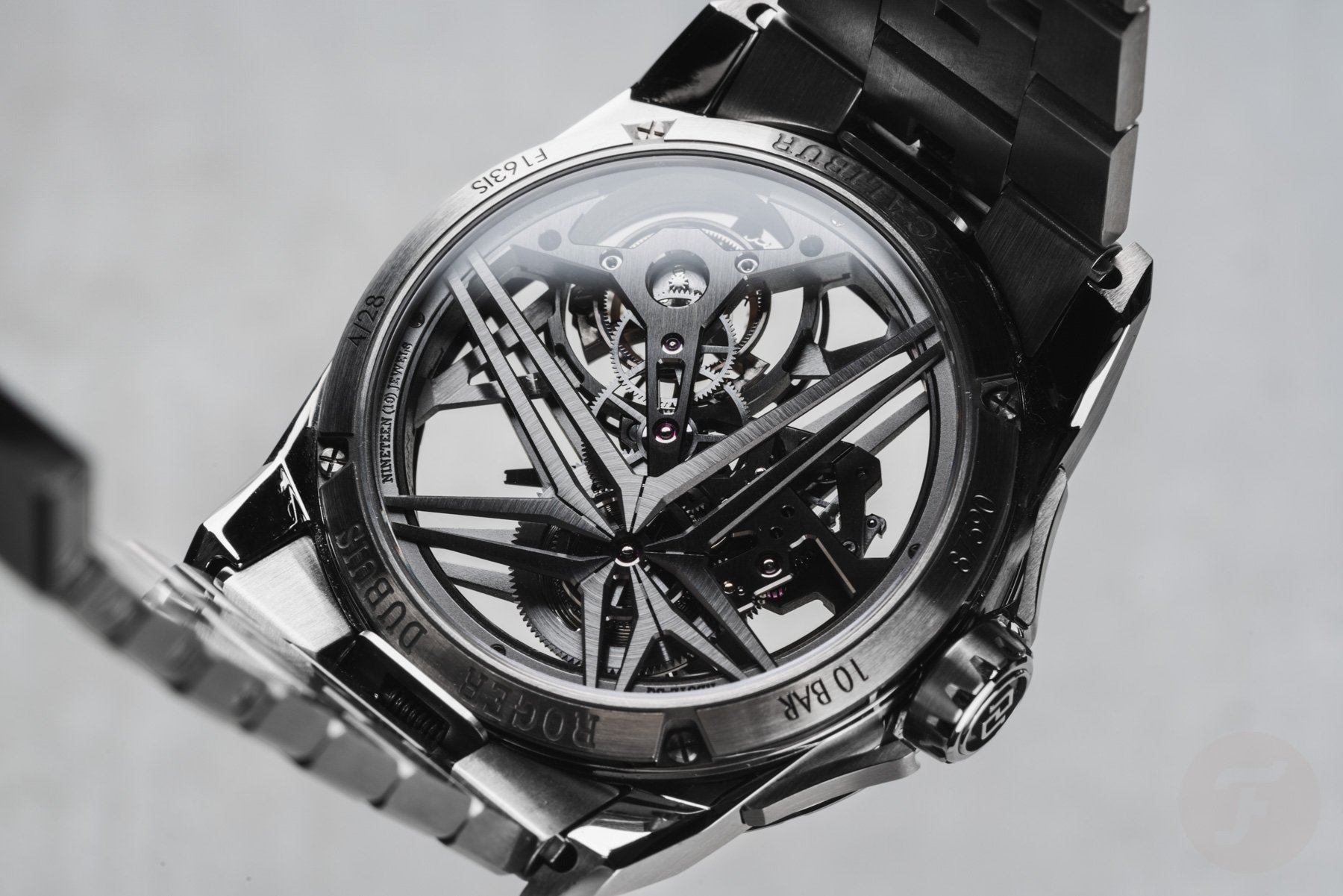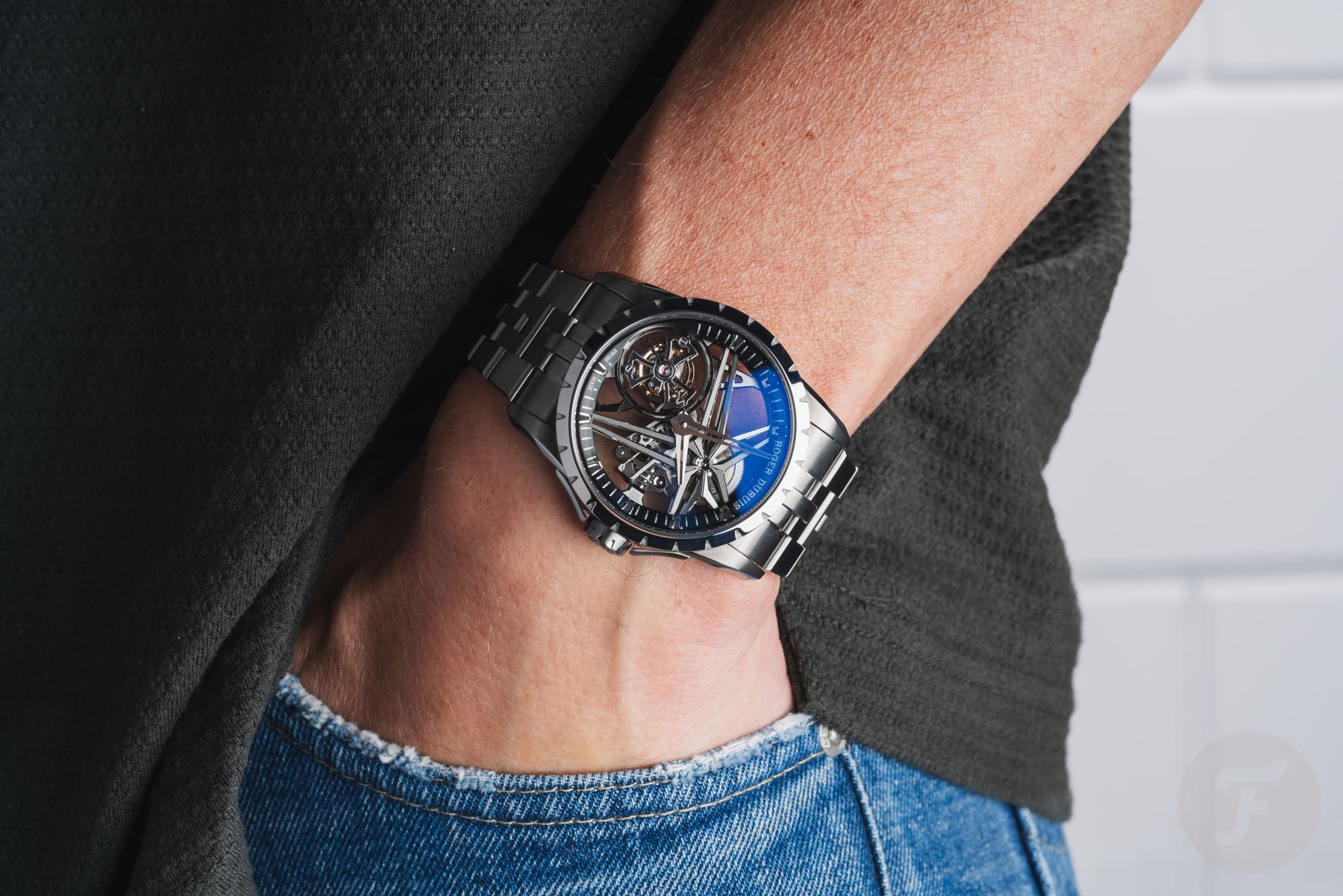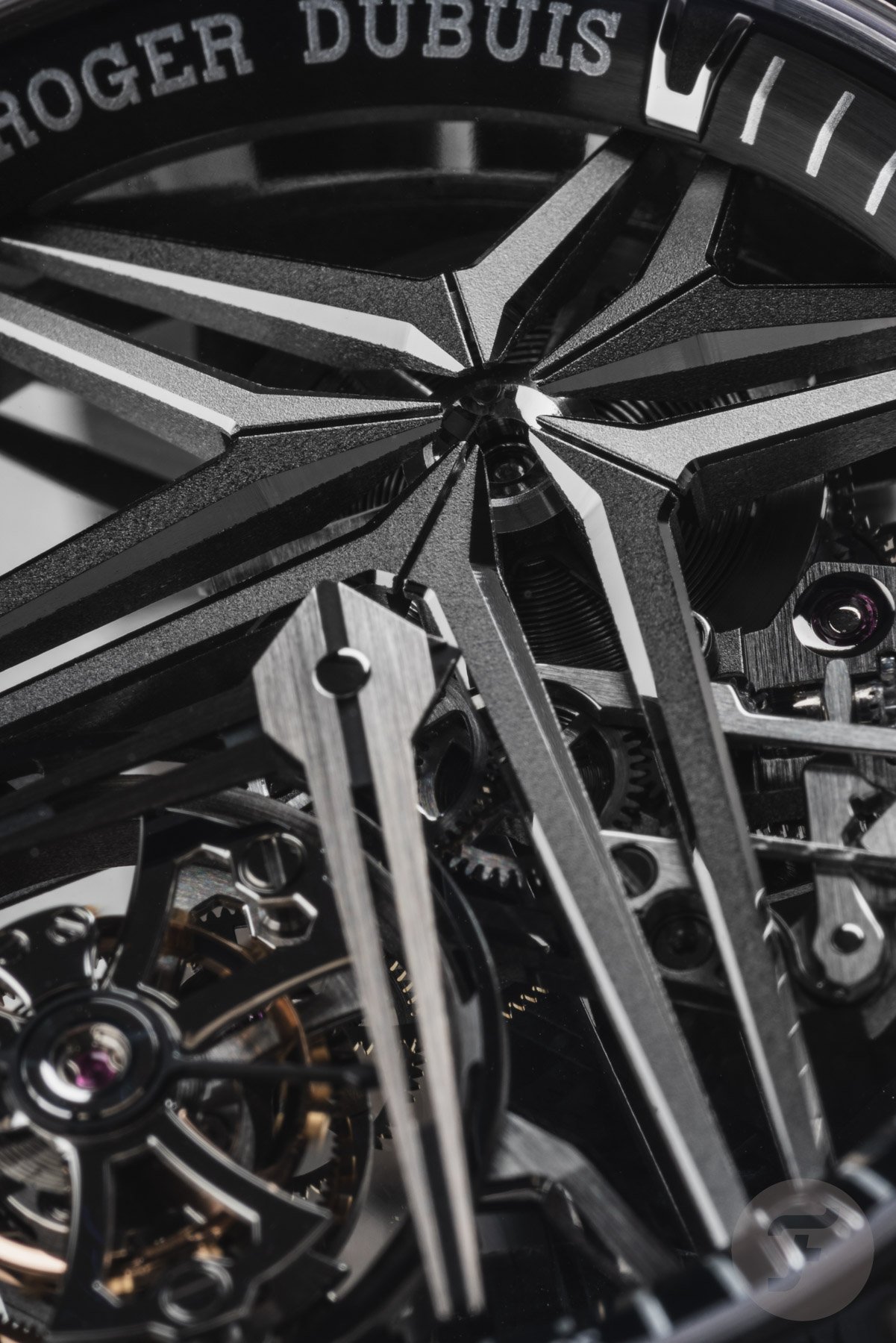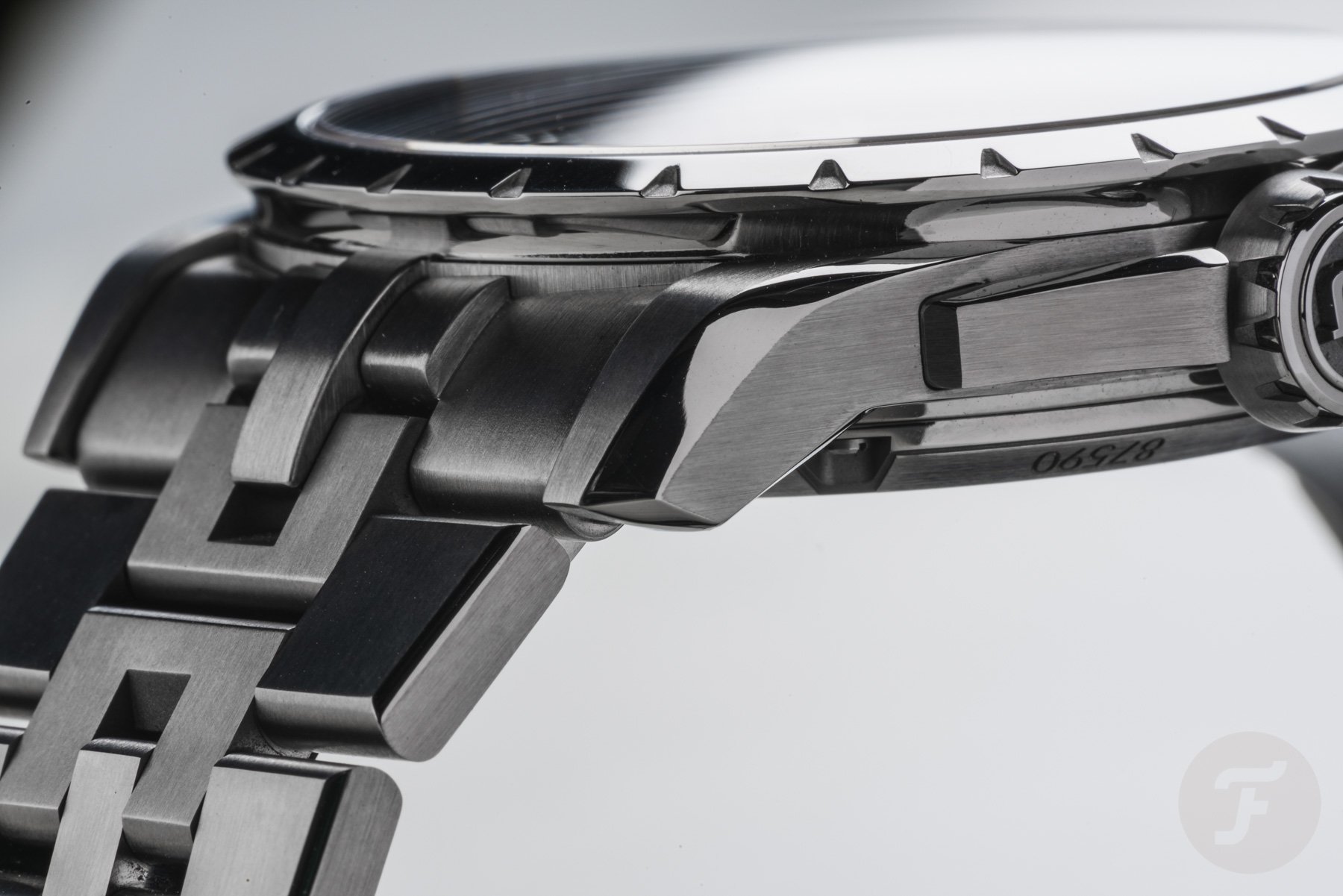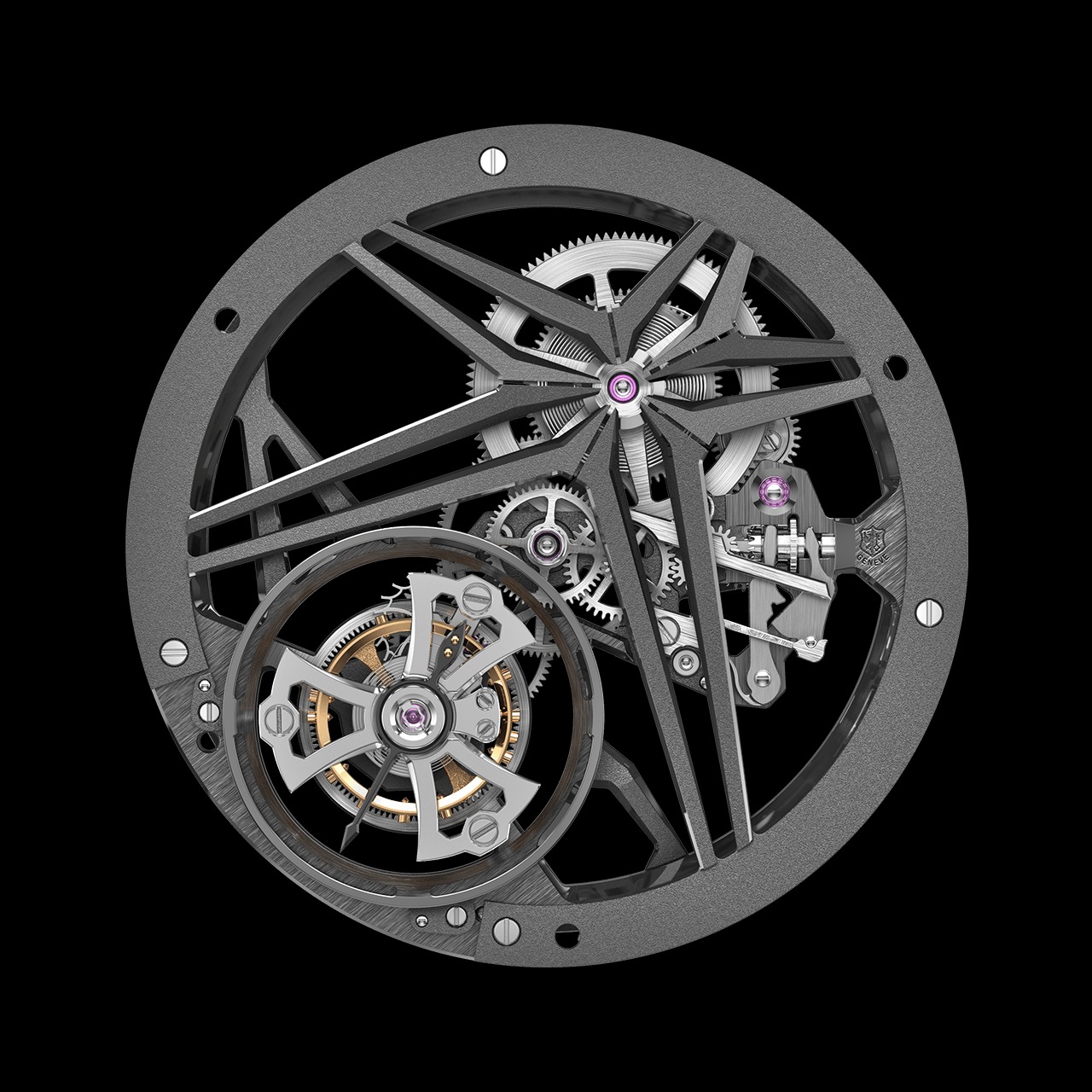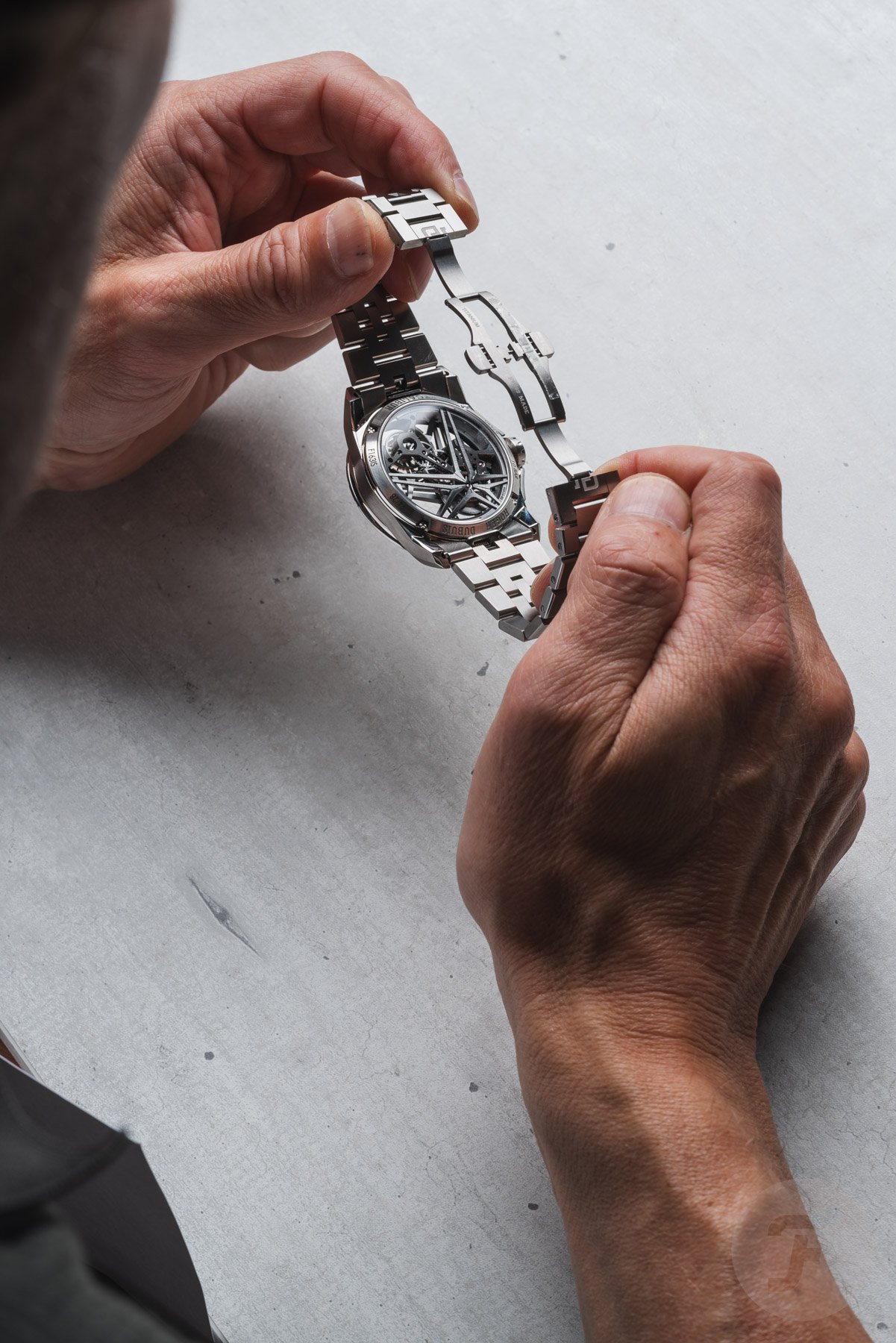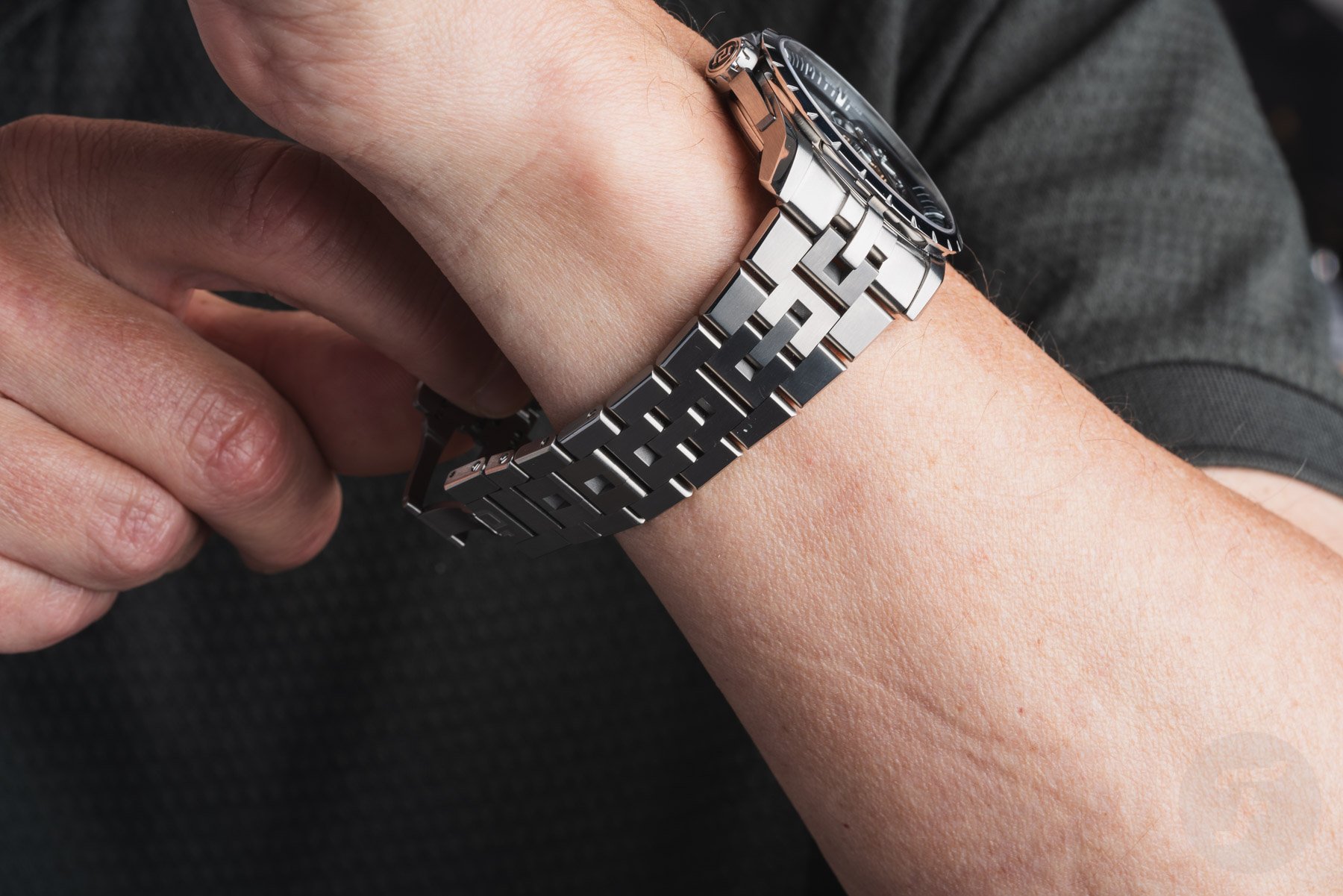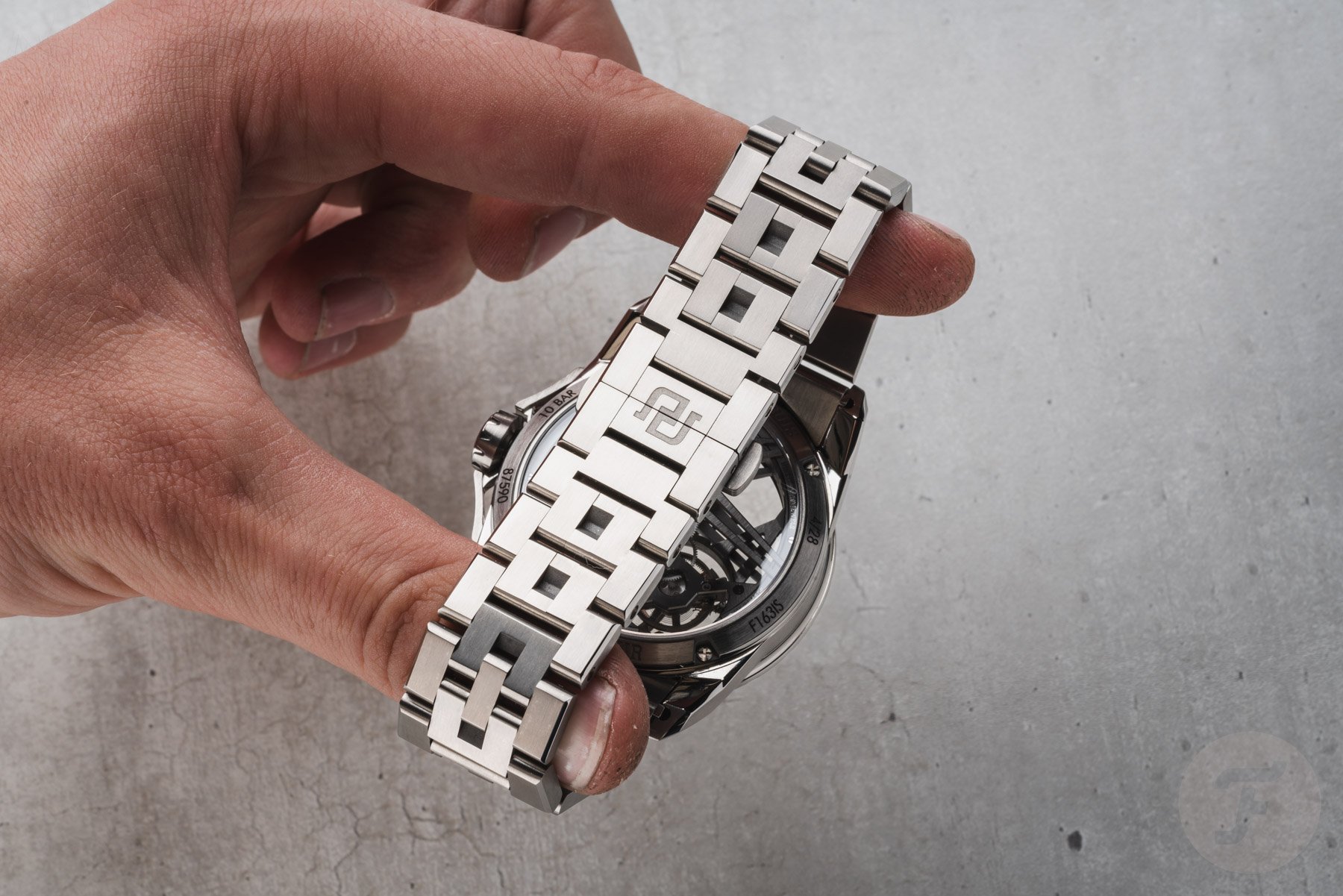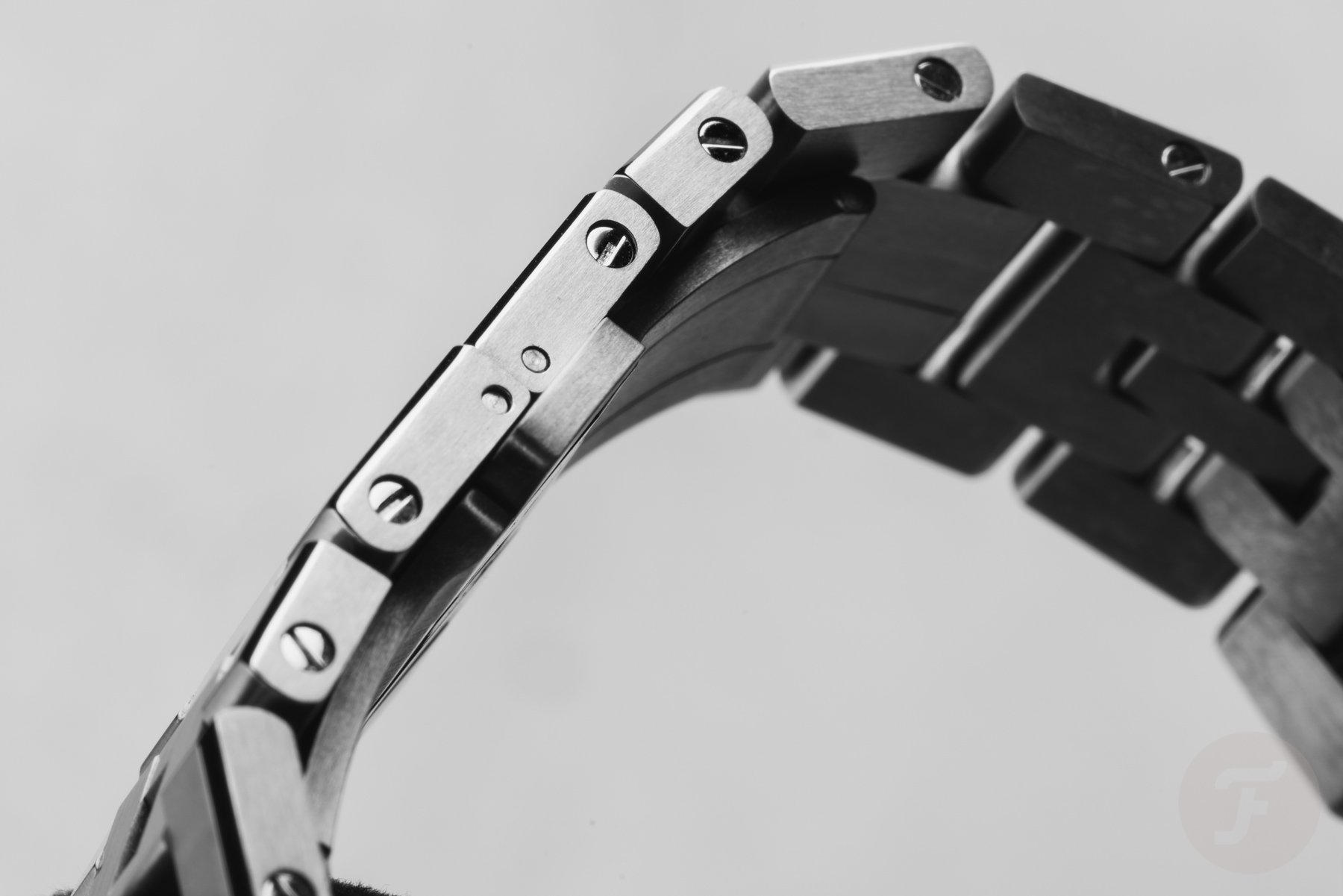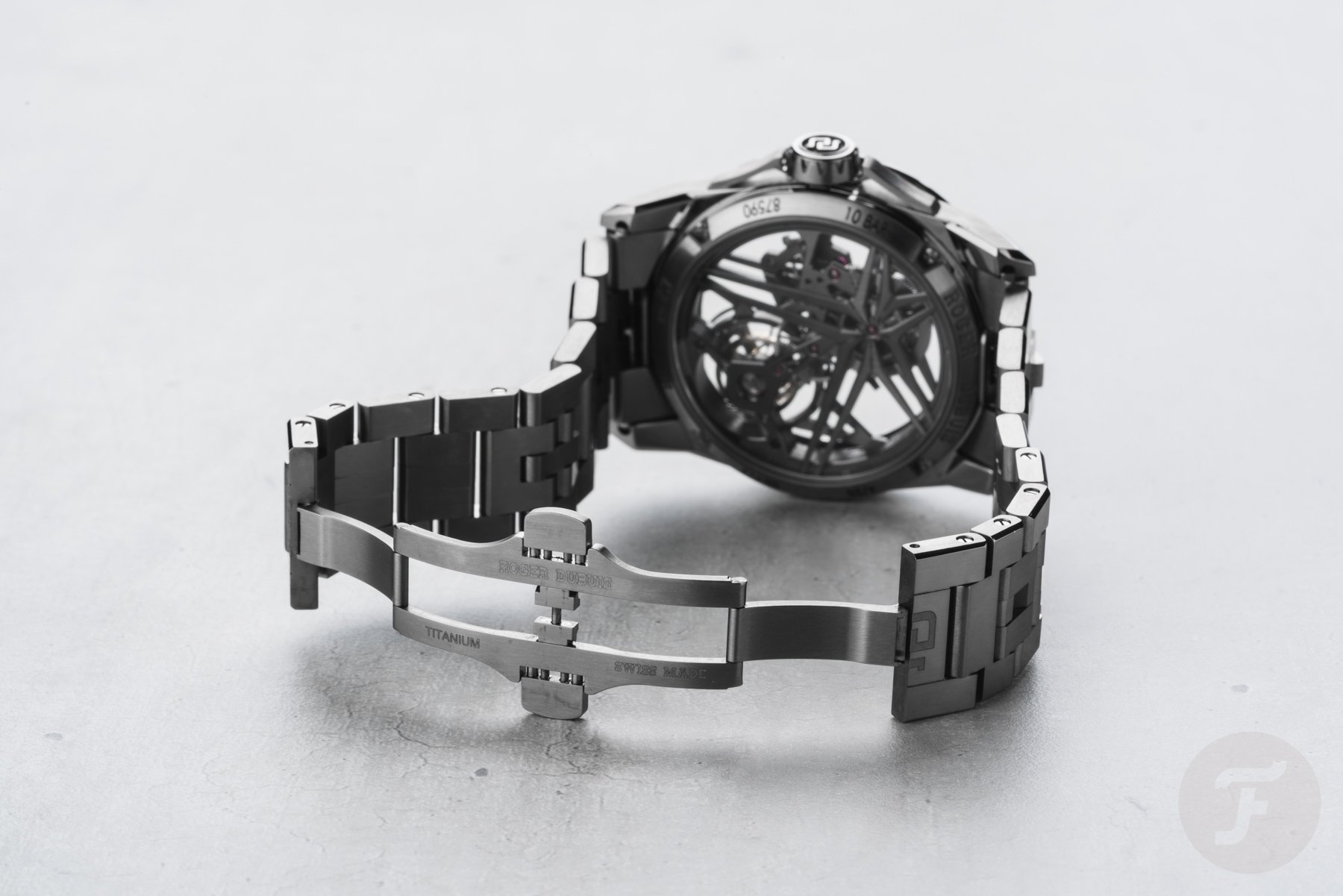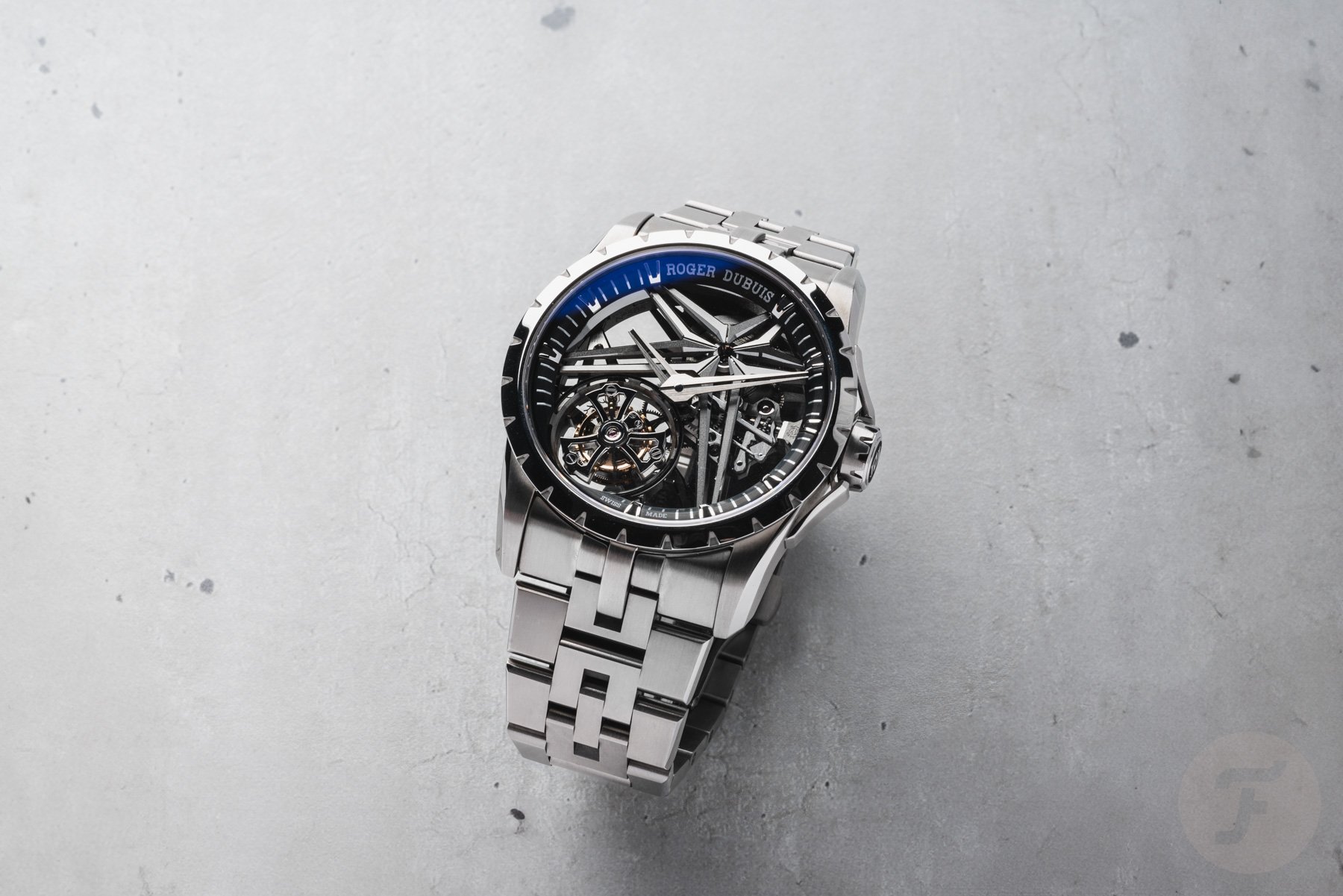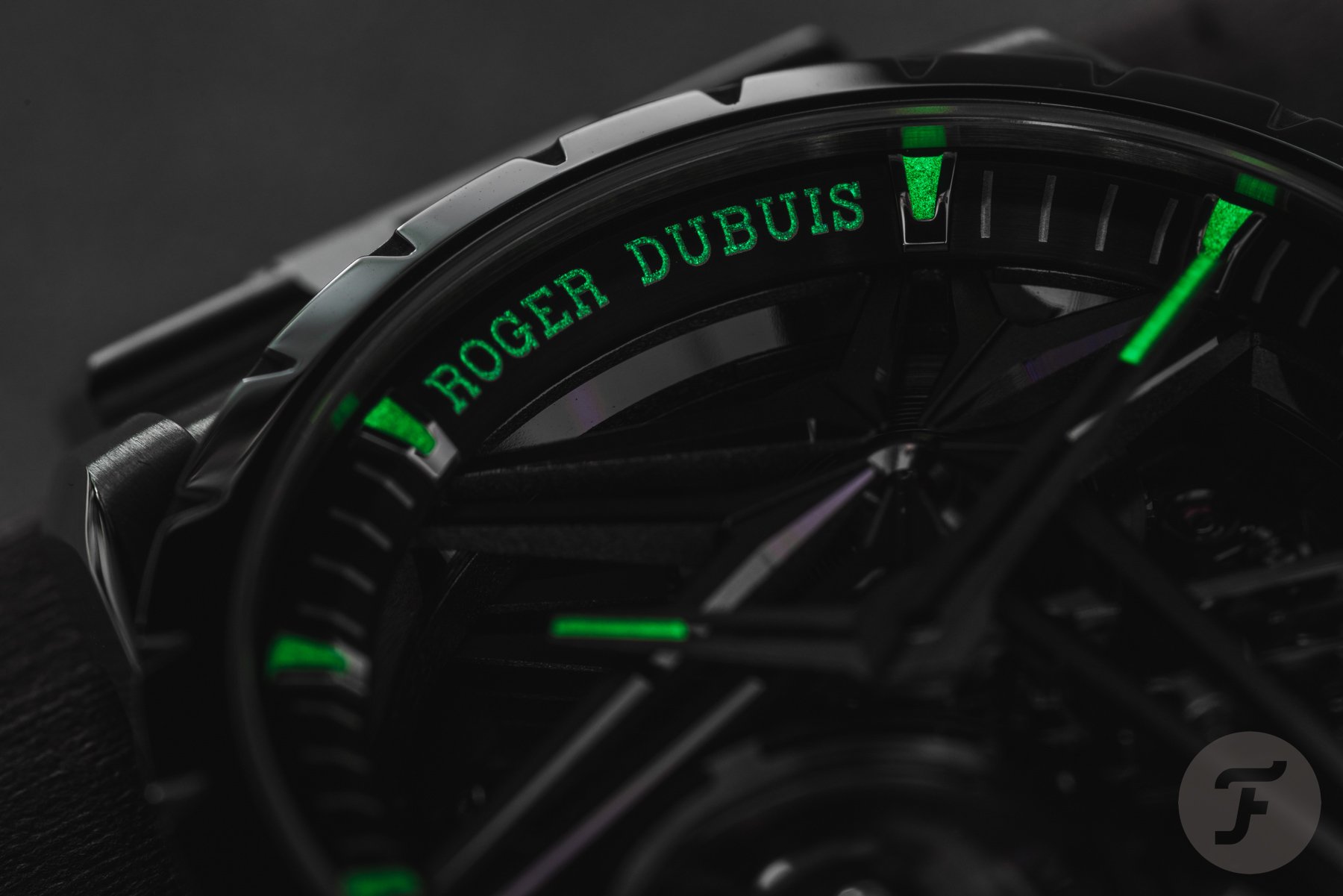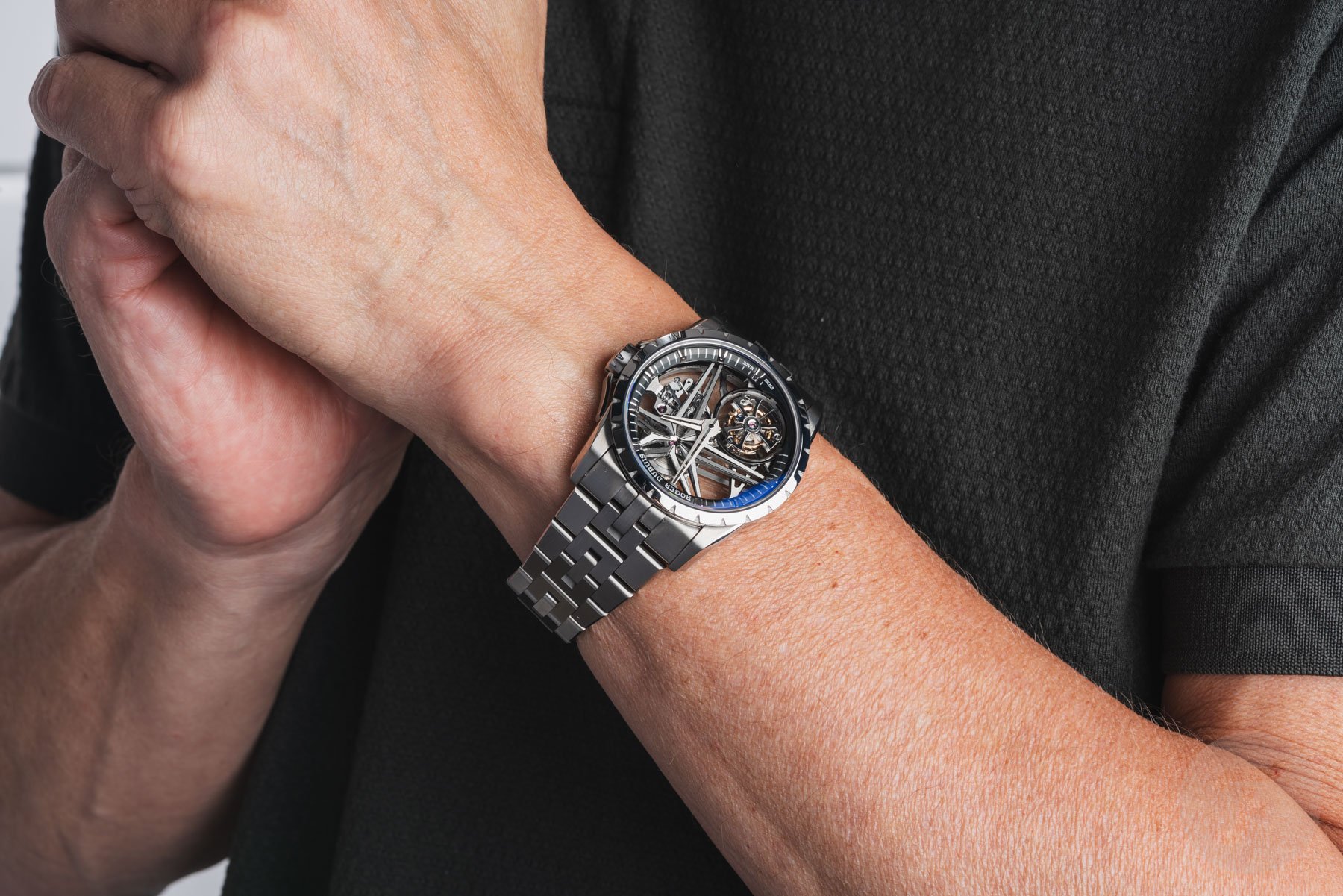Hands-On With A Hyper Watch: The Complicated And Minimalistic Roger Dubuis Excalibur Monotourbillon Titanium
Please, come closer. It’s worth it. When you do, you can find that the movement inside the Roger Dubuis Excalibur Monotourbillon Titanium comprises 194 parts and features no fewer than 16 types of manual finishing. This results in a sophisticated and impressive watch that is both complicated and minimalistic; indeed, it is a paradox in the metal. Creating an open-worked flying tourbillon watch worthy of bearing the coveted Poinçon de Genève requires great skill. The Excalibur Monotourbillon Titanium showcases the Maison’s long-time expertise in creating skeletonized movements featuring mechanical “whirlwinds.” A hands-on with the see-through Excalibur reveals that transparency is king.
If you can almost look right through a watch, what you see better be of great beauty. With delicate, exposed movement parts, this beauty shines best when given some space. Now, you might think that a 42mm watch case is hardly spacious enough for an open-worked movement to express itself fully. The Roger Dubuis Excalibur Monotourbillon Titanium (DBEX1112) proves that assumption wrong. The 42mm Grade 5 titanium case with a 12.62mm thickness and a length of 52mm — a wonder of CNC-machining and hand-finishing — proves to be a wonderful ”theater” for the star-shaped and open-worked movement to shine in.
Wandering through the inside of the Roger Dubuis Excalibur Monotourbillon Titanium
Roger Dubuis chose Grade 5 titanium for the case and bracelet for different reasons. The first was because the material is light and antiallergenic. This alloy comprises close to 90% titanium, 6% aluminum, 4% vanadium, and small traces of iron and oxygen. Grade 5 titanium is more costly than pure titanium, but it has some interesting advantages, such as greater strength and how it reacts to finishing. After being polished by hand, several parts of the case and bracelet display a luscious and resplendent shine.
Please remember that we’re still talking about the stage setting — the décor if you wish. The movement is the star of the show; it outshines everything. In the old days, skeletonized movements started their life as regular calibers, but times have changed. The birth of a contemporary skeletonized Roger Dubuis movement starts with firing up the computer. One of the fundamental problems with “old-fashioned” skeletonized movements is the lack of stiffness. A movement works best when nothing can flex.
Fire up the CAD computer and the CNC machines!
At Roger Dubuis, a new skeletonized caliber starts its life in the computer. CAD systems function as a design tool and a means to calculate the stress the movement will have to endure. And there is more computer stuff going on in the manufacture in Meyrin on the outskirts of Geneva. CNC machines mill the bridges and plates of the movement to minute tolerances, most often measured in microns.
By using modern-day technology, the traditional art of skeletonizing reaches new levels. Design starting from scratch allows more freedom in terms of aesthetics. And because everything begins with minute calculations and simulations, the new caliber doesn’t flex, therefore becoming more reliable and precise. By the way, precision is also one of the criteria of the Poinçon de Genève. The prestigious seal will only be given to a chronometer-precise creation made within Geneva and showing remarkable finishes and decorative details rooted in the authentic horological expertise of the canton.
At first glance, you might mistake the Roger Dubuis Excalibur Monotourbillon Titanium for the Excalibur Monobalancier Titanium. I get it. They have the same 42mm titanium case, bracelet, and look. But closer inspection reveals the major difference — the movement. And that different movement changes everything, including the price. Since this is Fratello, we have a grounded approach to watches, so we pay close attention to pricing. The non-tourbillon Excalibur will set you back CHF 64,500. The asking price for the Excalibur Monotourbillon Titanium is CHF 147,500. Yes, the version with a tourbillon is more than twice the price of the watch with a conventional regulating organ. How does one justify a humongous price difference like this?
Emotional money and a functional tourbillon
Before going deeper into the hand-wound flying tourbillon caliber RD512SQ inside the watch, let’s first have an emotional talk. Haute Horlogerie is all about emotion, anyway. CHF 64,500 is already an emotional price for a watch. This money is spent on exclusive luxury products with a story to tell. When you spend twice as much, you don’t get twice as much in the practical sense, but you do get a (slightly) better story. The Monobalancier is limited by production but not by numbers, while the Monotourbillon is a boutique exclusive limited to 28 pieces. The story of the tourbillon is also a bit more compelling than the one about the micro-rotor that spins inside the Monobalancier. For some, those differences are worth (a lot of) money.
Now we get to the tangible hardware that defines the Excalibur Monotourbillon Titanium — the hand-wound caliber RD512SQ with its flying tourbillon. The tourbillon tells the story of the greatest watchmaker of all time, Abraham-Louis Breguet, who invented the gravity-defying mechanical “whirlwind.” Unlike a “regular” tourbillon that has a bridge on the bottom and the top of the spinning mechanism, a flying tourbillon forgoes the top bridge. It was German watchmaker Alfred Helwig who first built a tourbillon like this in 1920. Because there’s no bridge on the top, the view of the mechanism is unobstructed, leaving more room for fascination in the eye of the beholder. Building a tourbillon of this kind is more difficult, as you would guess, and that shows itself in the price, as you would suspect.
More steampunk than baroque
The design language used in creating the caliber RD512SQ has little to do with the traditional, baroque-like skeletonized movements. You will find no frivolous engravings, for instance. Instead, the movement looks strong, sharp, defined, and luxurious in an industrial way. The in-house movement is a mechanical sculpture where light has plenty of room to shine through, and shadows create an intriguing visual spectacle. The center of the large, star-shaped bridge shows the jewel on which the barrel turns. And just like all the other components, that bridge is perfectly finished. A total of no less than 16 types of hand-finishing are used throughout the watch. The little sign of the Poinçon de Genève at 3 o’clock sits there for good reason.
Most tourbillons are positioned symmetrically at 6 o’clock. The folks at Roger Dubuis, however, decided to position the sizeable tourbillon at 7 o’clock instead. And if you think this off-centered position would cause imbalance to the watch, you’re wrong. Situated between the radiating points of the star, it makes complete aesthetic sense. This original positioning of the tourbillon — something of an RD tradition from the brand born in 1995 – creates a dynamic composition.
194 parts in total, 63 for the tourbillon
Of the 194 components used in the Roger Dubuis Excalibur Monotourbillon Titanium, 63 are found in the tourbillon. The lower part of the tourbillon cage is executed in titanium, and the upper part is in cobalt chrome. Like titanium, this alloy is nonmagnetic and lightweight, and using it reduces the tourbillon’s weight by 16%. The upper part in the shape of the Celtic cross — another feature typical of RD — received a striking mirror-polished finish to reflect light ever so vibrantly while spinning. The balance inside the tourbillon ticks at 3Hz, and when the mainspring is fully wound, it will do so for 72 hours.
You pay for space
When you put the Monotourbillon and the Monobalancier side by side, you must notice the difference in space. The space between the movement parts, I mean. The absence of a micro-rotor creates room for the skeletonized caliber to breathe. While the Monobalancier impresses you with an array of case-filling movement parts, the Monotourbillon has one focal point — the flying tourbillon at 7 o’clock. Only after having been semi-hypnotized by its spinning and ticking do the eyes wander to the star-shaped bridges, the barrel, and the visible setting mechanism.
One of the functional features of the spaciously open-worked caliber is that the time is easy to read. The large, skeletonized, sword-like hands, with one side polished and another brushed, tell time clearly, a feature not often associated with skeletonized watches. To use terms used in the mythical and hyper-horological realm of Excalibur, transparency is king. The Monotourbillon is a more regal creation than the Monobalancier.
A bracelet worthy of a king
One aspect that makes the Excalibur Monotourbillon Titanium such a regal creation is the bracelet. Its style complements the watch head’s design, with the case’s central lugs blending into the bracelet perfectly.
The bracelet shows brightly polished bevels and satin-brushed links that look good and help create a very comfortable fit. Because the links of the bracelet are short, they provide a great deal of flexibility, which is the key to comfort. The Grade 5 titanium bracelet is also outfitted with a push-button butterfly clasp and, thankfully, half links for adjustability.
A skeletonized watch that tells time
There’s much to say about the polarizing Roger Dubuis Excalibur Monotourbillon Titanium. It’s costly, exuberant, original, and exclusive. It also uses a design language you either understand or don’t. It requires a big budget to afford and maybe an equally big imagination and openmindedness to appreciate. Well, a watch named Excalibur is never meant for the traditionalist crowd, now is it?
The 28 pieces of the Roger Dubuis Excalibur Monotourbillon Titanium are only for the ones worthy of taking the watch from the box. Can you imagine someone going to an RD boutique, ready, willing, and able to acquire this limited-edition Excalibur, only to find out the watch stays firmly put in the display case? I also imagine a thundering voice coming from out of nowhere saying, “You shall not wear this watch!” but maybe I’ve watched Lord of the Rings one time too many. This is a watch for those who are bold, brave, and budgetarily unbound.
Easy-going Excalibur
Apart from all that, there’s absolutely no denying the Dubuis Excalibur Monotourbillon Titanium is an exquisitely executed watch. With every part of the movement manufactured and hand-finished according to the demanding criteria of the Poinçon de Genève, this Roger Dubuis creation is an excellent example of contemporary Haute Horlogerie. The fact that its design leads to a perfectly readable skeletonized watch might seem insignificant in the ultra-luxurious kingdom in which the Excalibur belongs. However, here at Fratello, that still matters. And I must say that the watch’s proportions, lightness, looks, and mesmerizing level of finishing had me in awe. Together with the Monobalancier Titanium, the Monotourbillon Titanium is the most easy-going creation in the Roger Dubuis catalog. It’s very Roger Dubuis and very wearable in every sense.

